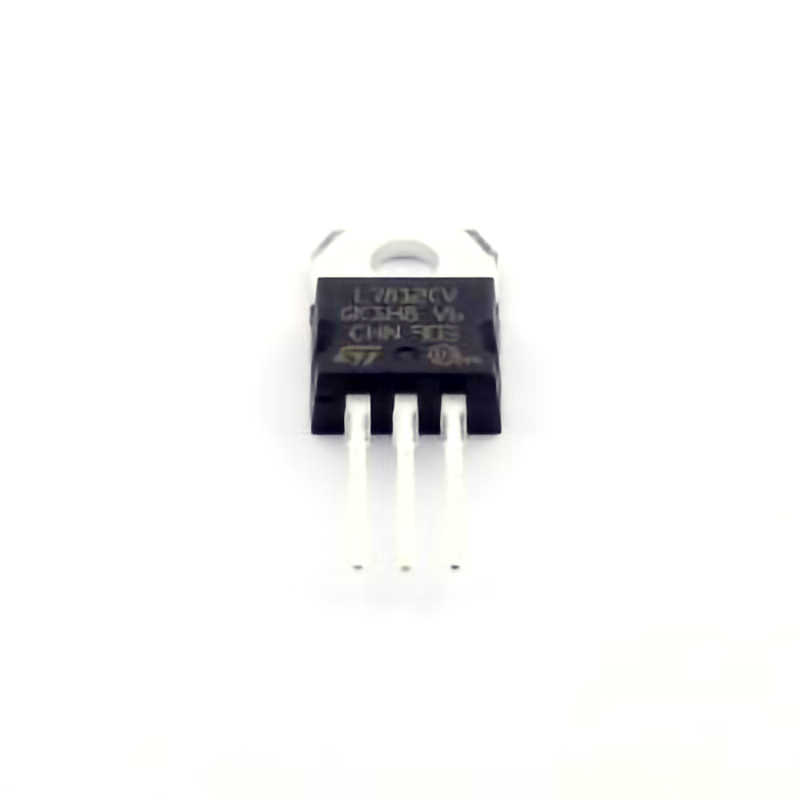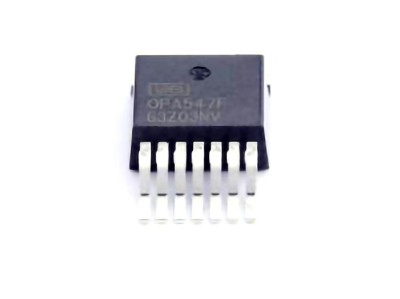
The L7812CV -DG is a popular 12V linear voltage regulator used in various electronic applications. Despite its widespread use, users may encounter problems such as overheating, incorrect output voltage, or Power inefficiencies. This article explores common troubleshooting methods and solutions to help you address any issues you may face when using the L7812CV-DG , ensuring optimal performance and reliability.
L7812CV -DG, voltage regulator troubleshooting, electronic circuit issues, power supply problems, voltage regulation solutions, L7812CV-DG output issues, troubleshooting linear regulators
Understanding the L7812CV-DG and Common Problems
The L7812CV-DG is part of the L78xx series of voltage regulators. As a three-terminal positive voltage regulator, it provides a stable output voltage (12V in the case of the L7812CV-DG) when input voltage is within a certain range. These regulators are essential components in power supply circuits, widely used in consumer electronics, communication devices, and automotive applications. However, like all electronic components, they can sometimes malfunction due to a variety of issues.
Before diving into troubleshooting, it’s essential to understand the basic operation of the L7812CV-DG.
Basic Operation of L7812CV-DG
The L7812CV-DG is designed to deliver a fixed 12V output. The input voltage needs to be higher than 12V for the regulator to function correctly, typically in the range of 14V to 35V. The device works by using an internal pass transistor to drop excess voltage and maintain a steady output, ensuring that sensitive circuits connected to the power supply receive a stable 12V, even if the input voltage fluctuates.
A common issue in power supply systems is the failure to maintain a consistent 12V output, which may result in circuit instability or damage to connected components.
Common Problems with L7812CV-DG
Incorrect Output Voltage
One of the most common issues when working with the L7812CV-DG is incorrect output voltage. This could result from several factors, such as an inadequate input voltage, incorrect wiring, or a faulty regulator. The expected output voltage should be 12V, but users often report voltages that are either too high or too low.
Causes of Incorrect Output Voltage
Low input voltage: The input voltage should be at least 14V. If the input is lower than this threshold, the L7812CV-DG may not regulate the voltage correctly.
Wiring issues: Loose connections or short circuits in the wiring can cause fluctuations in output voltage.
Damaged regulator: The L7812CV-DG itself could be damaged due to overheating, overcurrent, or other forms of electrical stress.
Overheating
Overheating is another common issue with the L7812CV-DG, especially in circuits that draw a high current. The regulator relies on dissipating excess power as heat, and if the voltage difference between the input and output is too large, or the current draw is too high, the regulator can overheat and shut down.
Causes of Overheating
Excessive input-output voltage difference: A higher difference between input and output voltages (e.g., a 24V input and a 12V output) generates more heat in the regulator.
High current draw: If the circuit connected to the L7812CV-DG draws more current than the regulator is rated to supply, this can cause the device to overheat.
Insufficient cooling: The L7812CV-DG does not come with a heat sink, so additional cooling measures are often necessary, especially in high-power applications.
Output Voltage Fluctuations
If the L7812CV-DG’s output voltage fluctuates or becomes unstable, the regulator may not be performing its intended function. Fluctuations can cause issues in sensitive electronic components, leading to erratic behavior or malfunction.
Causes of Output Voltage Fluctuations
Poor decoupling Capacitors : capacitor s are critical in stabilizing the output of voltage regulators. If the input or output capacitors are of insufficient value or quality, the output voltage may become unstable.
Load fluctuations: Rapid changes in the current demand of the load can cause the regulator to have difficulty maintaining a stable output.
Faulty regulator or damaged components: If the L7812CV-DG is internally damaged, it may fail to provide a stable voltage.
Noise and Ripple on the Output
In some applications, users may notice unwanted noise or ripple in the 12V output. This can interfere with the performance of sensitive devices such as audio equipment, microcontrollers, and communication circuits.
Causes of Noise and Ripple
Insufficient input filtering: If the input supply is noisy, it can affect the output. Proper filtering at the input is essential to minimize ripple.
Poor capacitors or absence of capacitors: Capacitors placed at the input and output of the regulator are critical in filtering noise. If these capacitors are not selected or placed correctly, noise can propagate through the system.
Troubleshooting and Solutions for L7812CV-DG Voltage Regulator Issues
Now that we understand the common issues with the L7812CV-DG, let’s discuss how to troubleshoot these problems and implement effective solutions. Below are some systematic approaches to fixing the problems listed in Part 1.
Troubleshooting Incorrect Output Voltage
Check the Input Voltage
Before blaming the regulator, ensure that the input voltage is within the required range. The L7812CV-DG needs a minimum input voltage of around 14V to regulate properly. If the input voltage is too low, the regulator will fail to produce a stable 12V output.
Solution:
Measure the input voltage with a multimeter to verify it’s above the minimum threshold.
If the input voltage is too low, use a higher voltage power supply or consider using a different regulator with a lower input voltage requirement.
Inspect Wiring and Connections
Check for loose wires, broken solder joints, or poor connections in the circuit. These can cause intermittent issues that may affect the output voltage.
Solution:
Inspect the wiring and soldering thoroughly.
Ensure that all connections are secure and free from shorts.
Replace the Regulator
If the input voltage is correct, and the wiring seems fine but the output voltage is still incorrect, the L7812CV-DG may have been damaged. Replace the voltage regulator to restore normal operation.
Troubleshooting Overheating
Check the Power Dissipation
The L7812CV-DG dissipates power as heat based on the voltage difference between input and output, and the current flowing through the device. If the input voltage is much higher than 12V, the regulator may get too hot.
Solution:
Measure the input and output voltage difference. For instance, if the input is 24V, the regulator will have to drop 12V, generating significant heat. Consider using a lower input voltage if possible.
Ensure the circuit draws current within the regulator's rated limits.
Add a Heat Sink
If overheating persists, add a heat sink to the regulator to improve heat dissipation. Heat sinks will help keep the regulator cool, preventing thermal shutdown and improving performance.
Use a Switching Regulator
If the circuit requires high efficiency and low heat generation, consider using a switching regulator instead of a linear one. Switching regulators are more efficient at converting high voltage to lower voltages and generate significantly less heat.
Troubleshooting Output Voltage Fluctuations
Ensure Proper Capacitor Selection
Capacitors play an important role in stabilizing the output voltage. Check whether you are using the recommended input and output capacitors. Typically, a 0.33µF capacitor at the input and a 0.1µF capacitor at the output are recommended for the L7812CV-DG.
Solution:
Verify that the capacitors are correctly placed and have sufficient capacitance.
Replace old or damaged capacitors.
Use Additional Filtering
If the output voltage still fluctuates despite using the correct capacitors, add extra filtering stages to the input. You can use bulk electrolytic capacitors and ceramic capacitors in parallel to smooth the input voltage further.
Troubleshooting Noise and Ripple
Improve Input Filtering
If noise is present in the output, the source of the problem is likely the input supply. Add capacitors at the input to filter out any high-frequency noise.
Solution:
Use a larger electrolytic capacitor (e.g., 10µF or more) at the input to filter low-frequency noise.
Place a ceramic capacitor (0.1µF to 0.33µF) in parallel with the electrolytic capacitor to filter high-frequency noise.
Check Grounding and Layout
Proper grounding and PCB layout are crucial for minimizing noise. Ensure that the ground traces are solid and that the regulator is not picking up noise from nearby high-current traces.
By following these troubleshooting steps and implementing the suggested solutions, you can ensure that the L7812CV-DG voltage regulator works efficiently and reliably. Proper maintenance and understanding of potential issues are key to maximizing the lifespan and performance of this valuable component in your electronic designs.
Partnering with an electronic components supplier sets your team up for success, ensuring the design, production, and procurement processes are quality and error-free.

